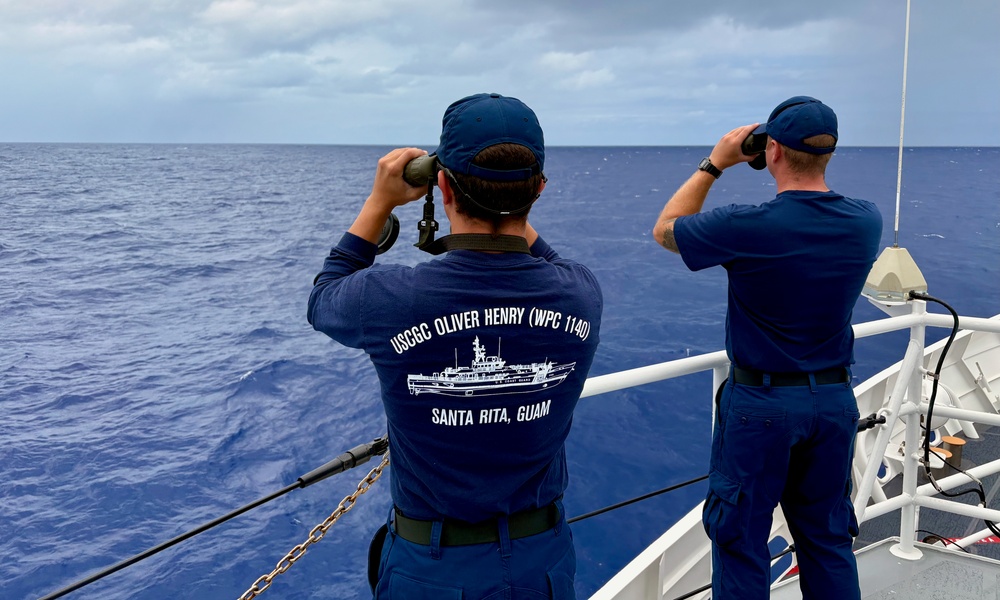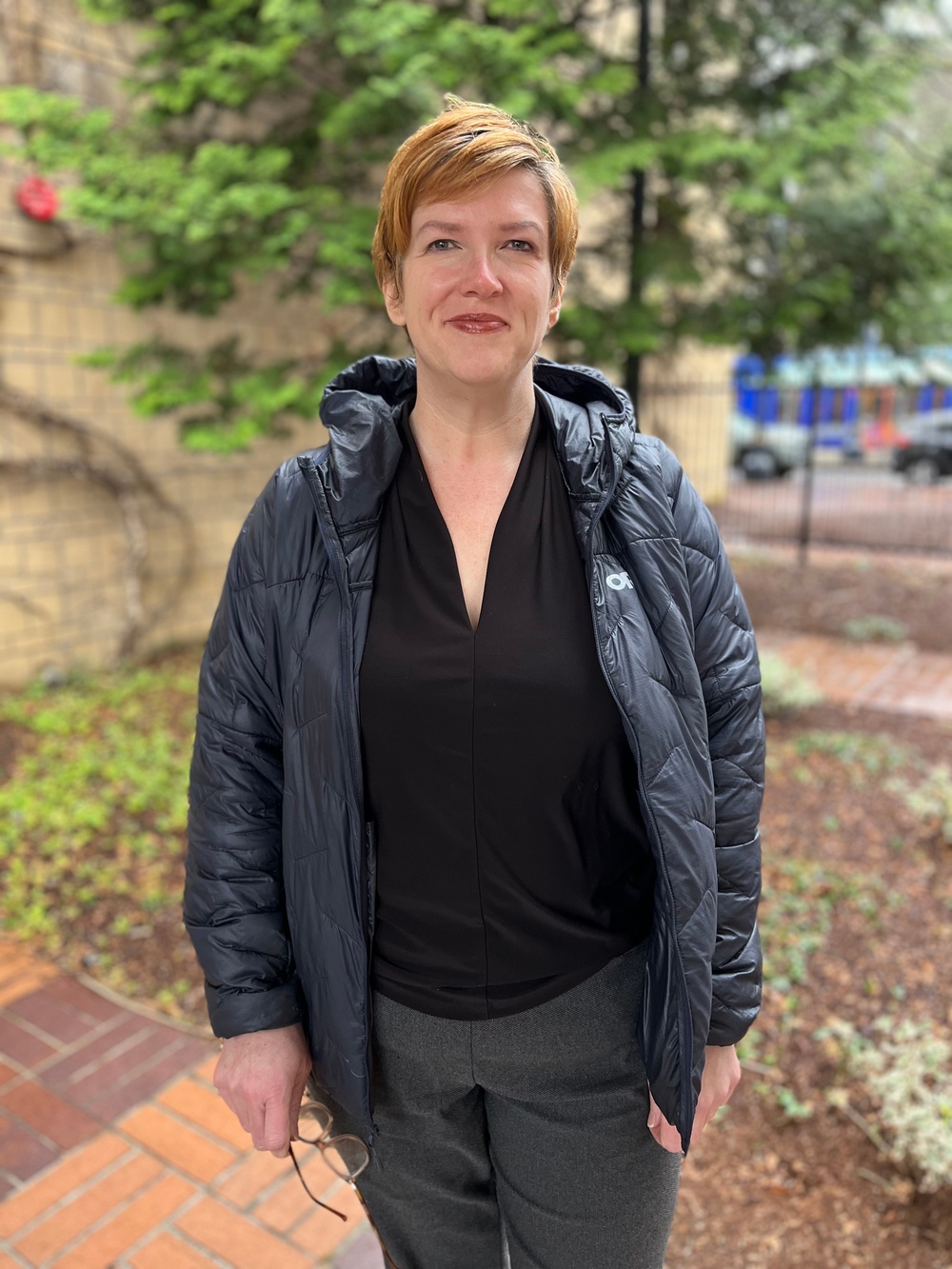DVIDS – News – Navy Conducts Revitalization at the Port of Tinian; Extends Life of Port Infrastructure for Region
TINIAN, Commonwealth of the Northern Mariana Islands (March 23, 2023) – Bubbling under the waters at the Port of Tinian, a team of Sailors from Underwater Construction Team (UCT) Two could be seen welding zinc anodes to the north quay wall earlier this year. UCT Two’s repair work was part of an ongoing series of improvements to Tinian’s harbor.
The dual-use port is the key supply gateway for the residents of Tinian and supports military operations in the region. The U.S. Navy built the port in the 1940s and it has been subject to the effects of constant exposure to the elements. In 2018, detailed infrastructure assessments by the U.S. Army Corps of Engineers indicated the port was suffering from significant corrosion. Improvements have been underway since 2020. These improvements included the repair of crumbling bollards and resurfacing aging concrete. When it came time to conduct underwater construction repairs, a team of specialists was brought in: UCT Two.
UCT Two, under Navy Expeditionary Forces Command Pacific Task Force 75 (CTF 75), is a specialized group of U.S. Navy divers who provide responsive military capabilities for underwater and waterfront engineering, construction, and repair in support of Navy and Marine Corps operations.
UCT Two sent three different detachments to work on the project over the past two years: Construction Dive Detachment (CDD) Alpha, Beta and Charlie. The most recent detachment, CDD Charlie, has been working on repairs and corrosion control in the port since December 2022.
The 12-man team wrapped up their work in February with zinc anode installation. The zinc anodes are an important finishing touch to protect the port from corrosion. Anodes made with zinc can be found in harbors and on large ships around the world, where they are used to protect metal from the corrosive effects of water. At the Port of Tinian, UCT Two affixed 131 anodes to the quay walls to increase the longevity of the infrastructure. “You can actually see them if you are on top of the surface, these big silver things,” said Andres Reyes of Naval Facilities Engineering Systems Command Marianas, and the environmental lead for the project. “Corrosion is going to happen no matter what, but it corrodes the zinc first before it corrodes the steel.”
Affixing the anodes to the quay walls was not as straightforward as it might seem. Each anode is five feet long and weighs 150 lbs. Divers had to transport equipment and safety gear from the surface to the underwater welding site, where they had to work with the ocean current and visibility conditions in the port waters. In addition, the team needed to accommodate environmental mitigation measures that required they leave the sea floor undisturbed.
To meet these requirements the team designed a custom-built welding platform. Lt. j.g. Daniel Nick, officer in charge of UCT Two, explained “Construction Mechanic 2nd Class Conner Clemmons, the project supervisor welded [the platform] during the planning in California. He welded it together himself. It gives the divers a workspace and gives us leverage we didn’t have before, trying to reach the sites for welding. Being on the platform gives us more capability and makes the work efficient.”
The trailer mounts of two pickup trucks suspended the platform above the sea floor. A hand winch was used to lower or raise the platform depending on the depth needed. This movable platform ensured divers were able to work on their projects safely, efficiently, and without inadvertently disrupting the marine life.
The diving platform was not the only environmental protection measure needed for the repairs at the port. Earlier detachments from UCT Two had to address a number of coral species growing within the harbor. The harbor environment, with all its infrastructure upgrades, would not be suitable for the endangered coral life. To protect the coral, CDD Alpha trained and executed a massive coral translocation.
“The process of moving the coral is ultimately very complex,” Reyes said. Reyes was heavily involved in the complex environmental coordination procedures for the port improvements, especially the coral translocation. “From the beginning, there was a lot of agency coordination since the site where the coral would be relocated falls outside of the military’s jurisdiction.”
Although the Port of Tinian was under U.S. Navy’s area of responsibility, the long-term monitoring site recommended by the Commonwealth of the Northern Mariana Islands (CNMI) Bureau of Environmental and Coastal Quality and the CNMI Department of Fish and Wildlife was not.
Reyes said the process for approval and permitting to meet compliance and repair needs was constantly evolving over the course of two years.
“There were definitely a lot of unique things we needed to do and address in order to proceed,” he said. “From the Army Corps to the CNMI agencies, we had to be very creative on how we approached the entire thing. It took a team effort across the whole board.”
The environmental team for the project worked closely with agencies including the CNMI State Historic Preservation Office, National Oceanic and Atmospheric Administration National Marine Fisheries Service (NOAA-NMFS), the CNMI Bureau of Environmental and Coastal Quality, and the CNMI Bureau of Military Affairs Office, among many others.
Once the paperwork was in order, the actual technique for moving the coral from one location to another required special training.
Reyes explained, “for some of these guys, it was their first time ever moving coral. They had to be trained, that was 16 hours over two days of training consisting of both classroom and in-water portion, learning the whole biology and the methodology for moving the colonies.”
UCT Two Divers carefully detached each individual coral from the port surfaces and brought them to a staging area where each one was identified, measured, and documented. At the new site, just outside of the Tinian harbor, the substrate of each coral was evaluated for optimal relocation. A selected site was scrubbed with a wire brush and prepped with a specialized concrete mixture.
“For the reattachment, we actually used a pretty complex mixture of cement, silica sand and a couple other ingredients,” Reyes said. “It’s not like you can just go and buy regular cement at the store. You have to attach the coral underwater; the properties for cement underwater aren’t the same like on land.”
UCT Two adjusted to these requirements easily. “Our previous team here, Construction Dive Detachment Alpha, did a fantastic job learning a new complex skill and we appreciate them taking on this challenge so we could make the necessary repairs,” Nick added.
The team has gained valuable takeaways for their next project.
“The biggest takeaway was the new platform system we developed for the welding,” Nick said. “What started as an environmental restriction has turned into a more effective system for underwater construction. We have taken an extraordinary challenge and could complete it in under fifteen minutes. We will continue to use that technology in future projects.”
Reyes said the complexity of coordination on the project was challenging and enlightening.
“On the surface everything looks pretty simple, but it was a massive team effort across all the federal agencies and the CNMI government agencies, and our partners,” he said. “For me, the main takeaway from this whole experience is really making sure that the whole team and everyone’s methodology is embraced.”
With the harbor adequately repaired and protected from corrosion, there are talks of making future repairs to increase the capability of the port.
“UCT Two has a great appreciation to the people of Tinian for the opportunity to strengthen their harbor and would love for the opportunity to return to Tinian continue to make improvements,” Nick said.
| Date Taken: | 03.23.2023 |
| Date Posted: | 03.22.2023 19:31 |
| Story ID: | 440983 |
| Location: | MP |
| Web Views: | 52 |
| Downloads: | 1 |
PUBLIC DOMAIN

This work, Navy Conducts Revitalization at the Port of Tinian; Extends Life of Port Infrastructure for Region, by Rachel Landers, identified by DVIDS, must comply with the restrictions shown on https://www.dvidshub.net/about/copyright.


 Private Internet Access gives you unparalleled access to thousands
of next-gen servers in over 83 countries and each US state. Your
VPN experience will always be fast, smooth, and reliable.
Private Internet Access gives you unparalleled access to thousands
of next-gen servers in over 83 countries and each US state. Your
VPN experience will always be fast, smooth, and reliable.
